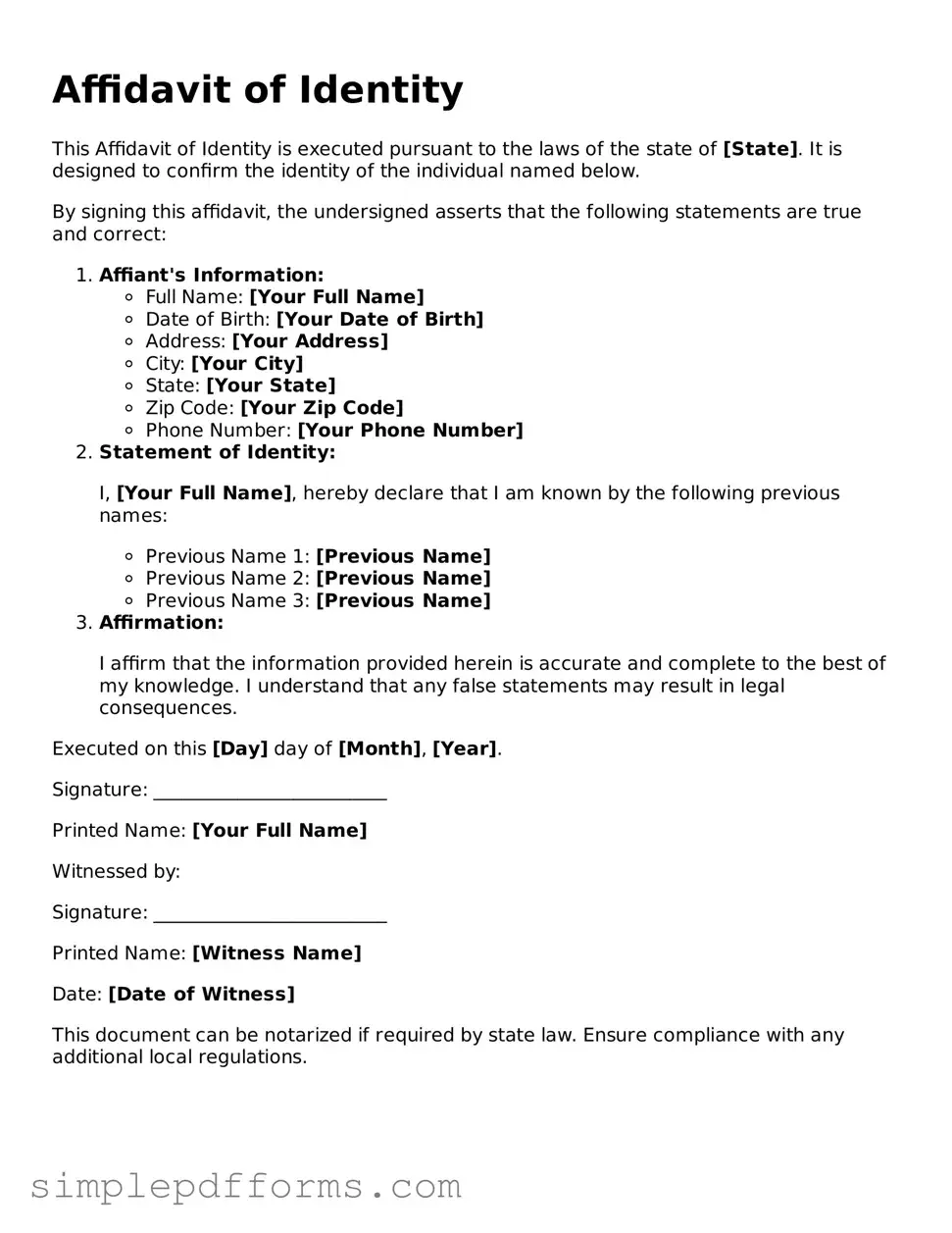Affidavit of Identity
This Affidavit of Identity is executed pursuant to the laws of the state of [State]. It is designed to confirm the identity of the individual named below.
By signing this affidavit, the undersigned asserts that the following statements are true and correct:
- Affiant's Information:
- Full Name: [Your Full Name]
- Date of Birth: [Your Date of Birth]
- Address: [Your Address]
- City: [Your City]
- State: [Your State]
- Zip Code: [Your Zip Code]
- Phone Number: [Your Phone Number]
- Statement of Identity:
I, [Your Full Name], hereby declare that I am known by the following previous names:
- Previous Name 1: [Previous Name]
- Previous Name 2: [Previous Name]
- Previous Name 3: [Previous Name]
- Affirmation:
I affirm that the information provided herein is accurate and complete to the best of my knowledge. I understand that any false statements may result in legal consequences.
Executed on this [Day] day of [Month], [Year].
Signature: _________________________
Printed Name: [Your Full Name]
Witnessed by:
Signature: _________________________
Printed Name: [Witness Name]
Date: [Date of Witness]
This document can be notarized if required by state law. Ensure compliance with any additional local regulations.
